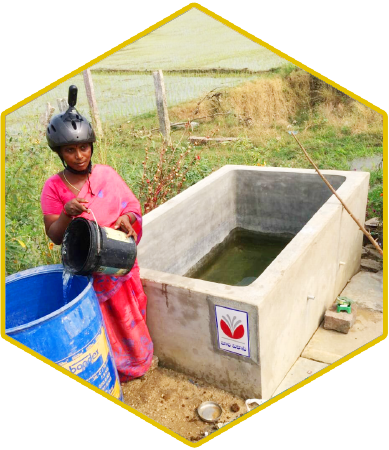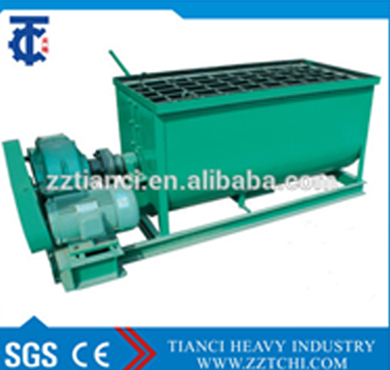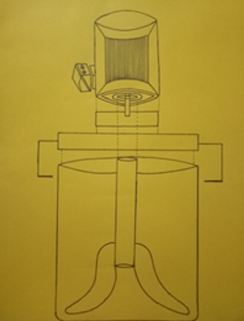India is an agricultural country. About seventy percent of our population depends on agriculture. One-third of our National income comes from agriculture. Our economy is based on agriculture. The development of agriculture has much to do with the economic welfare of our country. Our agriculture remained under developed for a long time. We did not produce enough food for our people. Our country had to buy food-grains from other countries, but the things are changing now. India is producing more food-grains than its needs. Some food-grains are being sent to other countries. Great improvements have been made in. agriculture through our five year plans. Green Revolution has been brought about in the agricultural field. Now our country is self-sufficient in food-grains.

| Sno | Designation | Name | Hall No |
|---|---|---|---|
| 1 | Varsha Bolneni | (16K41A0509) | Team Leader |
| 2 | Rishitha Kesharaju | (16K41A0528) | Finance Officer |
| 3 | Bhavitha Elukurthi | (16K41A0507) | Team Manager |
| 4 | Praveen Aitha | (16K41A0503) | Web Master |
| 5 | Praneeth | (16K41A04E3) | Partner Liaison |
Farmers use chemical fertilizers for growth of their crop. But there are many disadvantages to the crop if chemical fertilizers are used. Few of the disadvantages are:
1. If high concentrations of fertilizers are applied to the soil, the natural nutrients of the soil are imbalanced. Usage of nitrogen containing fertilizers reduces stability in the system and causes soil acidification.
2. Excessive application of fertilizers affects the environment negatively and it a waste of time and money to the growers.
3. The nutrients like the nitrate when washed off the soil into natural water systems and into groundwater cause problem to natural habitats and human health.
4. Many of these fertilizers are acidic, long term used of these increase the acidity of the soil which reduces the beneficial soil organisms and also stunts plant growth.
5. Long term used of fertilizers can lead to chemical imbalance in the recipient plants.
6. Too much use of chemical fertilizers may sometimes burn the plant or even kill them.
7. Organic farming is an alternative agricultural system which originated early in the 20th century in reaction to rapidly changing farming practices. Organic farming continues to be developed by various organic agriculture organizations today. It relies on fertilizers of organic origin such as compost manure, green manure and bone meal and places emphasis on techniques such as crop rotation.
8. To prepare these organic mixtures they need to put in a lot of effort, concentration and time into it. Usually small and medium scale farmers us a stick and mix the mixture with their hands. Few organic mixtures need to be mixed twice or thrice a day for a particular period of time. Farmers need to cautiously come to mix the mixture. If not the mixture gets spoiled.
Organic farmers in India face many difficulties.The difficulties of an organic farmer does not end with harvesting the produce. Severe lack of suitable infrastructure is proving to be the Achilles’ heel for organic farming and its produce. Maximum organic farming consists of fruit and vegetable production, which is highly perishable by nature
One of the main advantages associated with ethnographic research is that ethnography can help identify and analyse unexpected issues. When conducting other types of studies, which are not based on in-situ observation or interaction, it can very easy to miss unexpected issues
To observe them personally we as a team have visited two villages nearby where farmers adopted the organic farming. We have done the ethnographic survey to find out their problems in organic farming. In that process we have had an interaction with 15-20 farmers in a village and jotted down their difficulties.
1. Physical pain while mixing the organic mixture.
2. If they try to buy the mixtures, they are very costly.
3. To avoid the physical pain they tried to buy machines, but small and medium scale farmers couldn’t afford the existing organic mixture machines.
4. At once they could only mix the mixture for 1 acre of land easily.
To reduce the efforts of a farmer in preparing the organic mixture by designing a low budget organic fertilizer making machine.
The best Community partner to collaborate with, while trying to solve agricultural problems is Balavikasa NGO. Through our college faculty we got the contact details of this NGO and proceeded with them. They introduced us to few village people who are into organic farming since many years. This made our work a little easier to find out their difficulties in organic farming.
SOPAR-Bala Vikasa is a non-profit organization founded in 1977 by Bala Theresa and André Gingras with the mission to support and strengthen the development process of India’s poor communities, particularly in Andhra Pradesh and Telangana.
Since its inception, the organization has grown to be regarded as a model non-for-profit organization – in India and internationally – because of its concrete results helping entire communities come out of poverty. SOPAR-Bala Vikasa has no religious or political affiliation and values transparency and professionalism.
In addition to community driven development programs, SOPAR-Bala Vikasa is ardently involved in building the capacities of development professionals, entrepreneurs and the corporate sector in best practices of sustainable development gleaned from over 35 years of field experience. SOPAR-Bala Vikasa works with local partnering organizations to enhance impact.
While SOPAR is headquartered in Ottawa, Canada with a new charitable initiative in the USA, Bala Vikasa has its head office and training center in Warangal, India. Together the two entities work as sister organizations pursuing the same vision and mission.
To reduce the farmers physical effort while mixing the organic mixture.
To help them by adding automatic system, rotates the mixture twice a day automatically for five minutes.
At the end of the project, our team will deliver the product, ie. A motor fixed with blenders attached to a rod, Arduino set up with RTC, Relay and connections.
There are existing products for our problem statement which we understood in detail through multiple resources like Patents, Reesearch papers, YouTube, e-Commerce websites and commercial market.
Existing solution-1, The below machine is not suitable for mixing the organic mixture because this machine mixes the mixture horizontally where as the actual mixture should be mixed in clockwise direction.

In the process of finding the perfect solution to our problem statement we have visited twice to the village and took user feedback. We have designed paper models of our three different ideas and taken them to village to ask them which one is feasible to them. PUGH’s matrix also helped a lot in taking the decision. Using it we have chosen which design has to be implemented.
Physical decomposition is a process where we divide the product into meaningful components. Functional decomposition is the process where we divide the product such that each component has its own function or specification.

The conceptual design document mentioned in the above chapter, was implemented and the detailed design of the product was completed. To validate the product we have done the user testing at user premises. The below shown images are representing the user testing of the designed model.
By opting EPICS as our elective we have learnt many new things like team management, time management, how to design a product, how to find out the problems and their solutions, how to implement them within the budget and best of all is interactive skills.
Throughout the course we have implemented whatever we learnt and designed a portable organic mixture machine. This machine was built within the budget as a cost friendly to the small and medium scale farmers (i.e., Rs.4000). Users were satisfied with the machine when after testing the machine.
The implementation part has become easy because of the prior research during the design phase. There is huge scope for the next level extension, to make a more robust machine with the technology like IoT and Robotics.
In the above links, we came to know about how the organic mixture is being made and the correct weight of everything dumped into the drum to make the mixture and all the information about how many times they prepare this mixture for one cultivation, how much they do this mixture for their lands is been delivered in the above specified videos.


SR Engineering College
AnanthaSagar (V), Hasanparthy (M),
Warangal, Telangana - 506371

+ 91-870-2818333-11
epics@srecwarangal.ac.in
Follow us